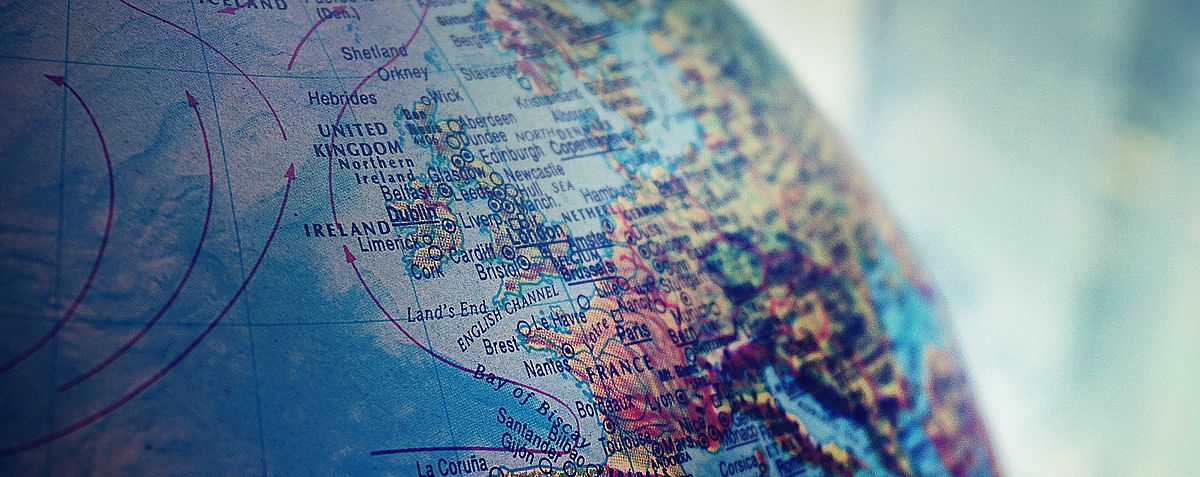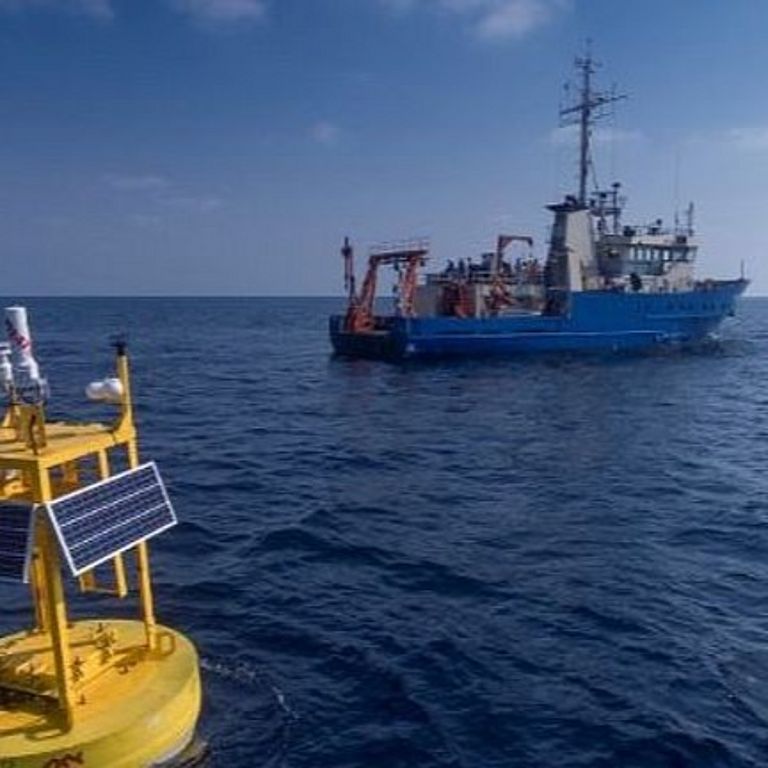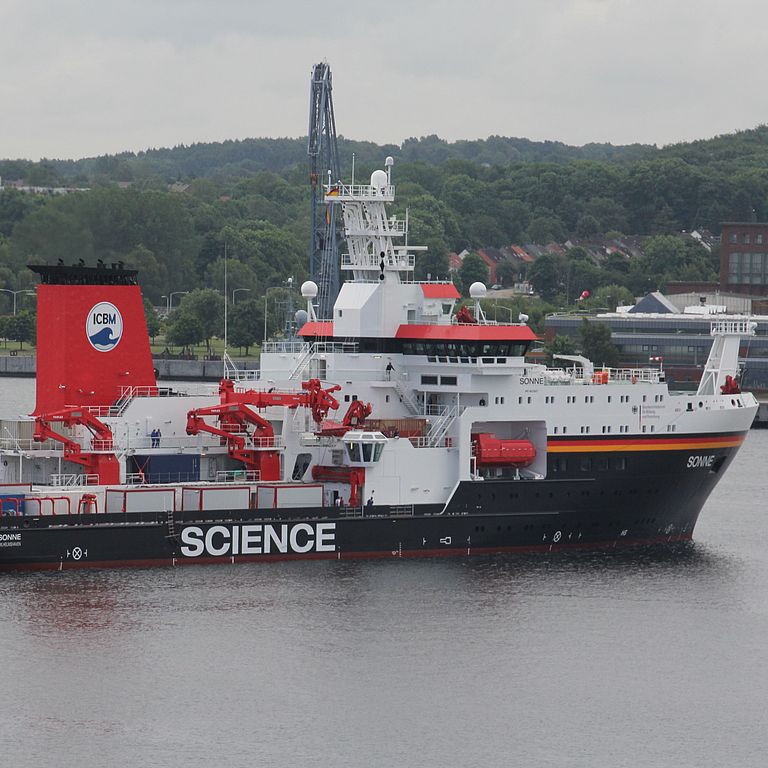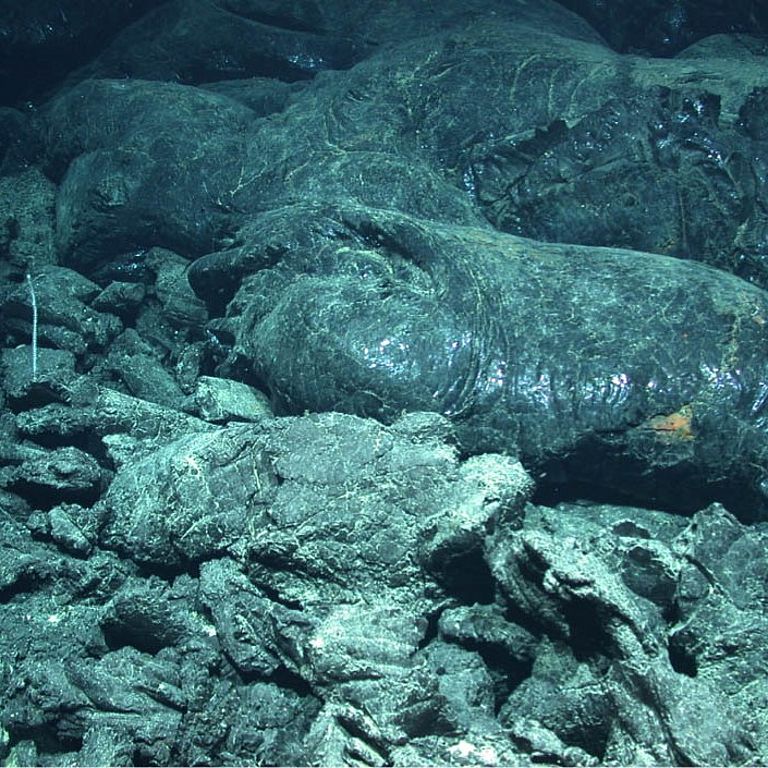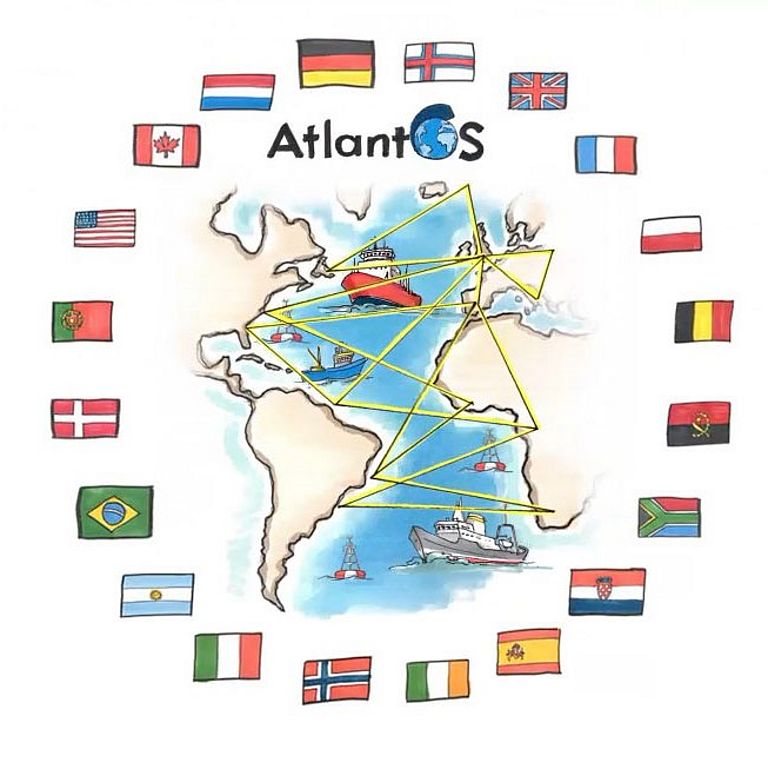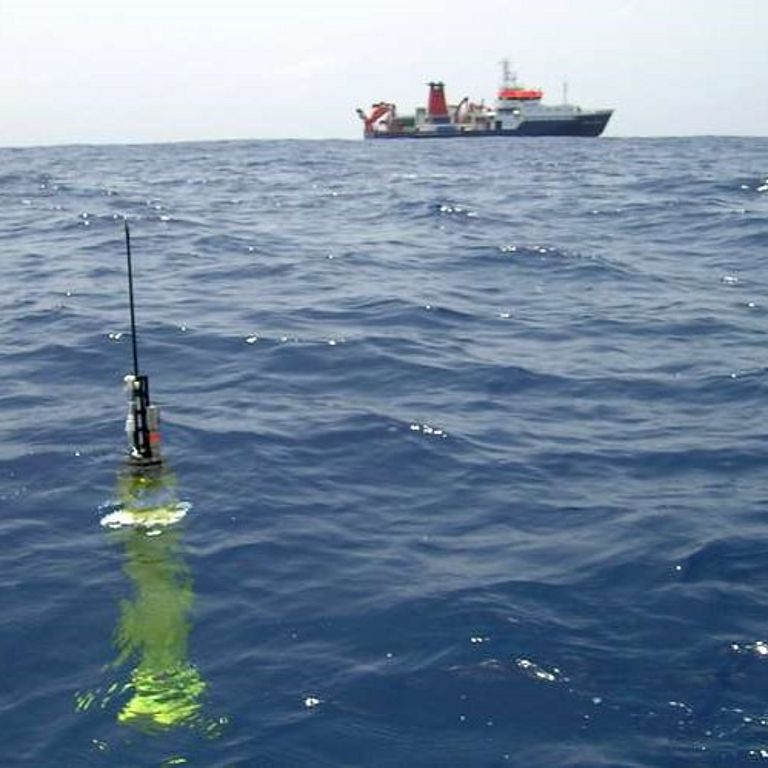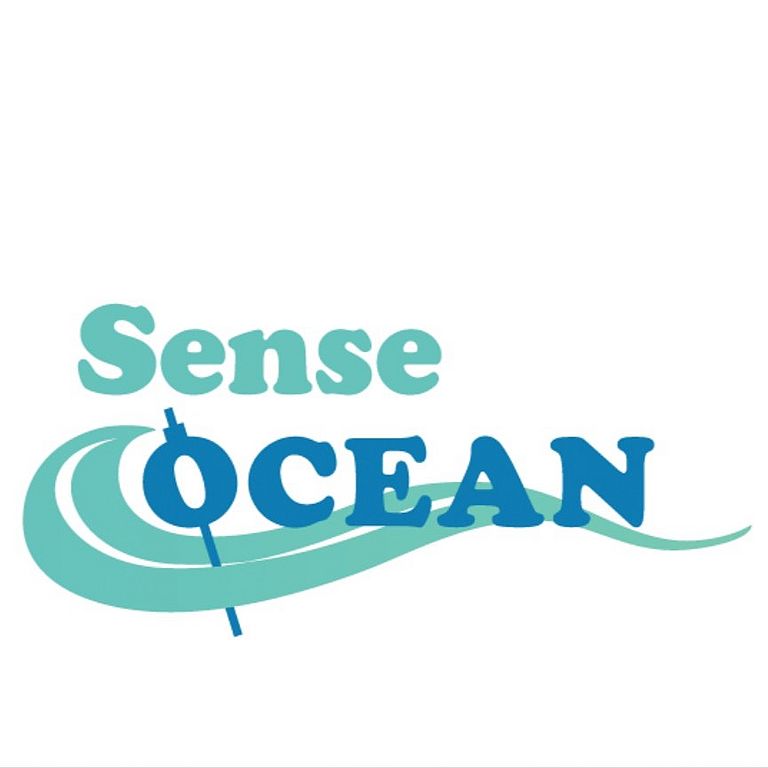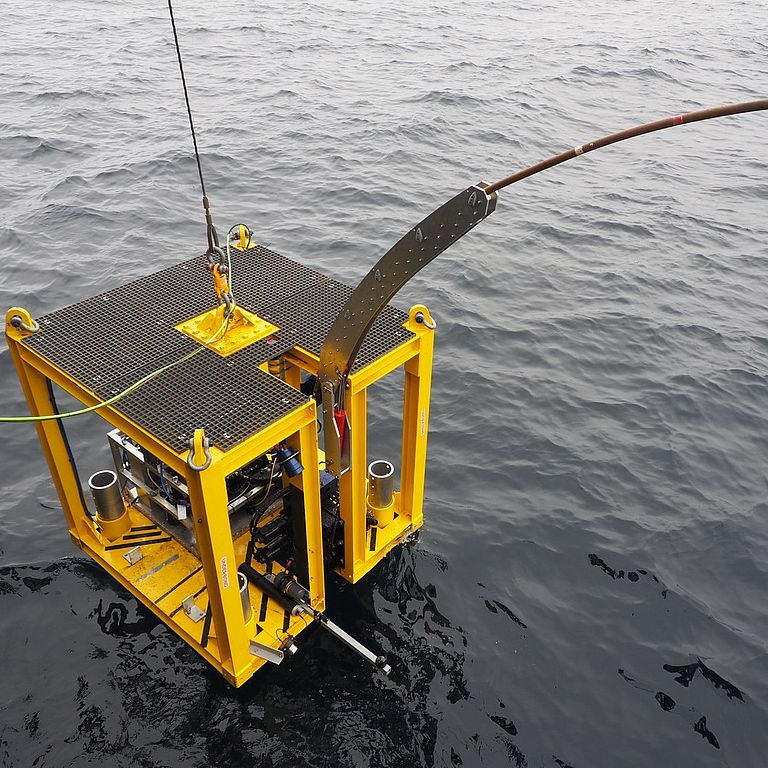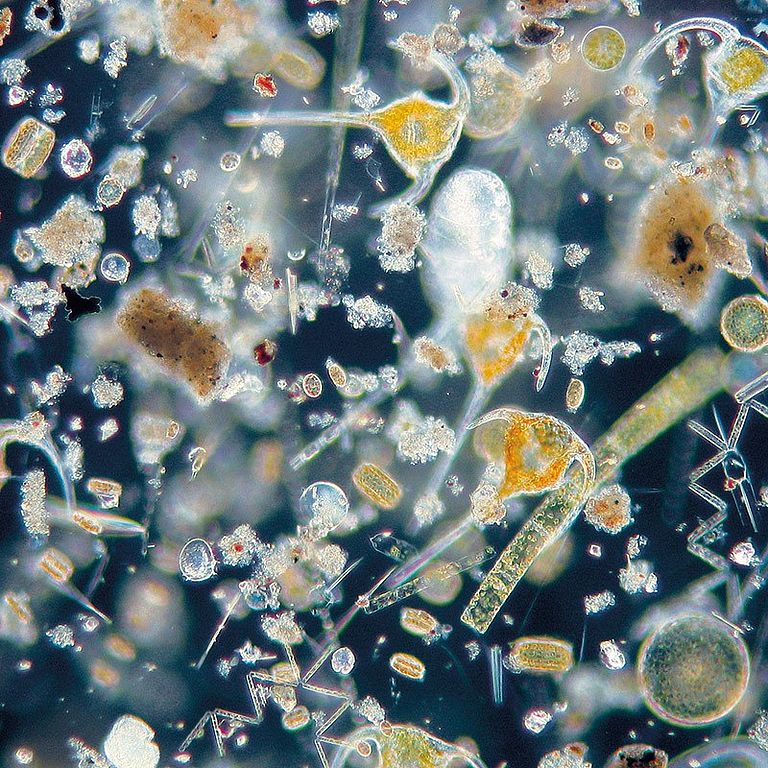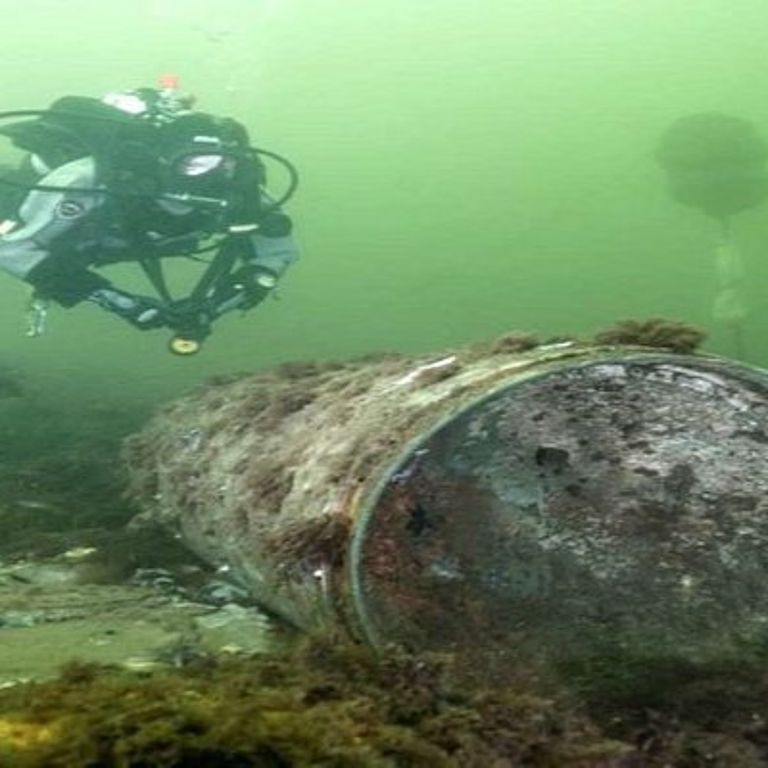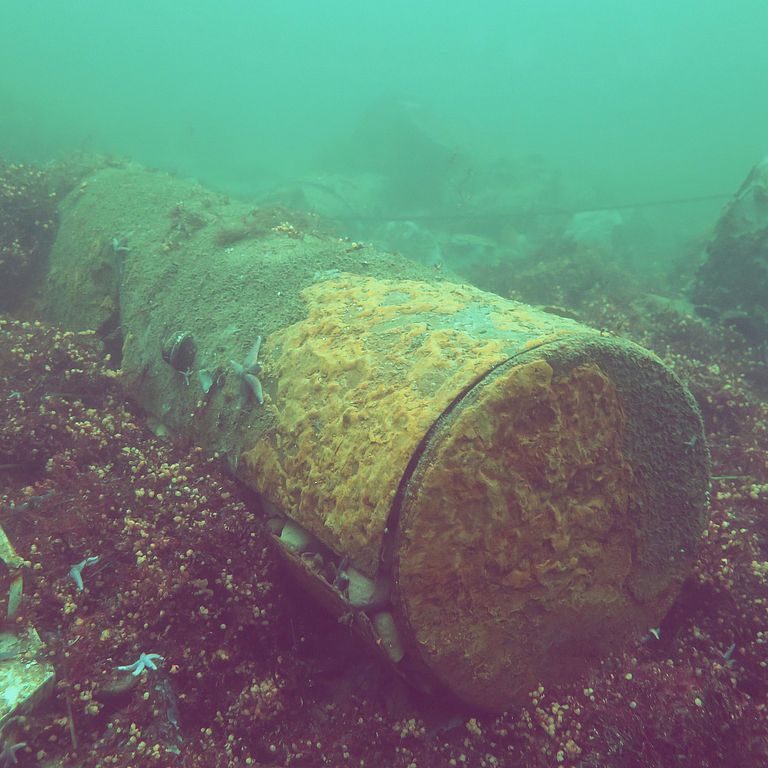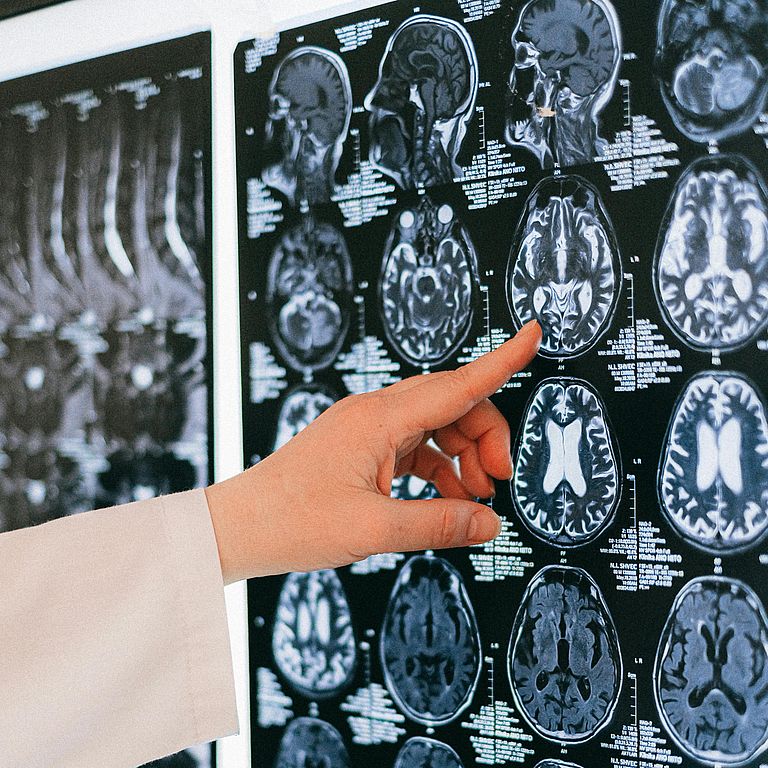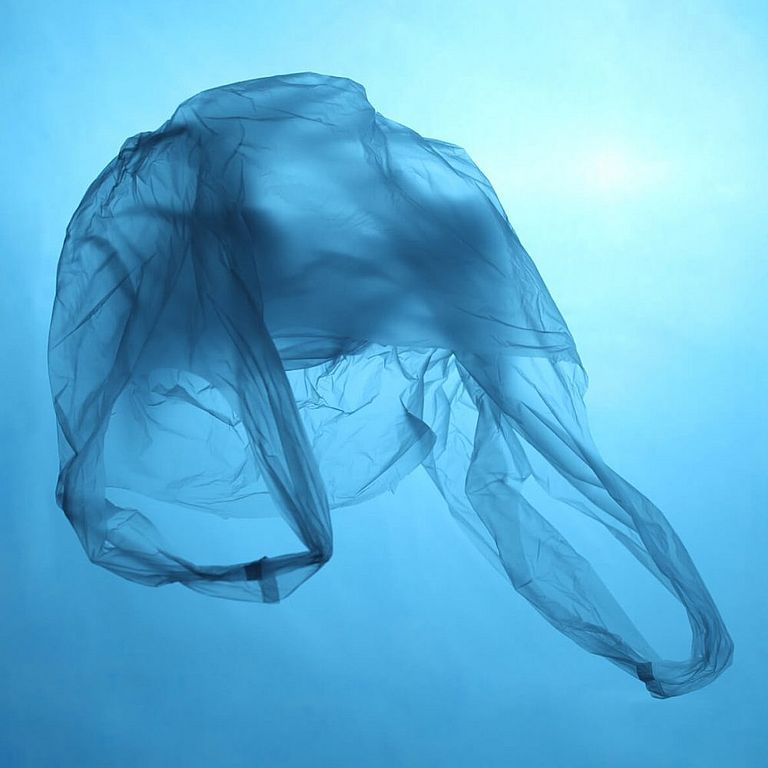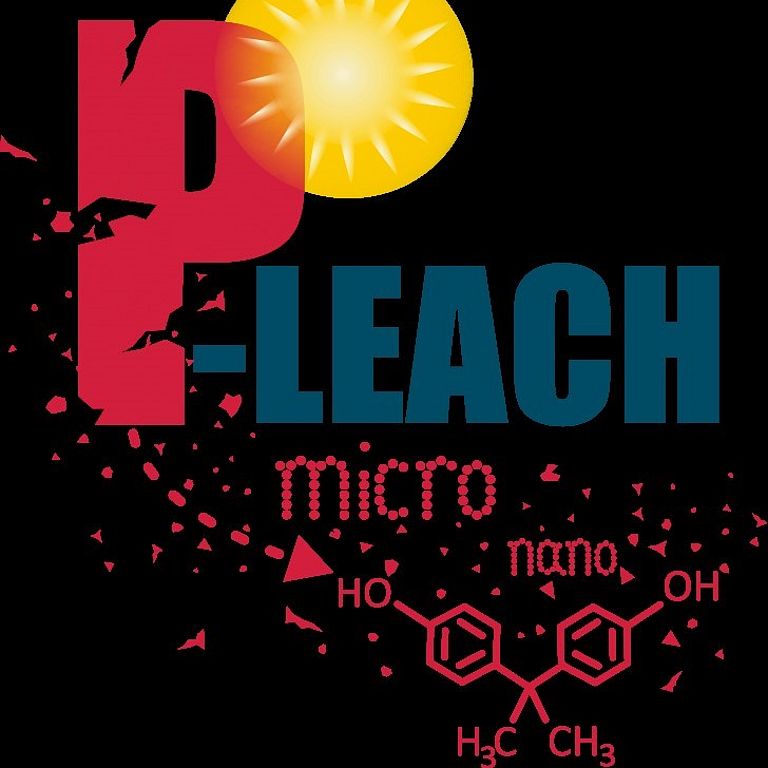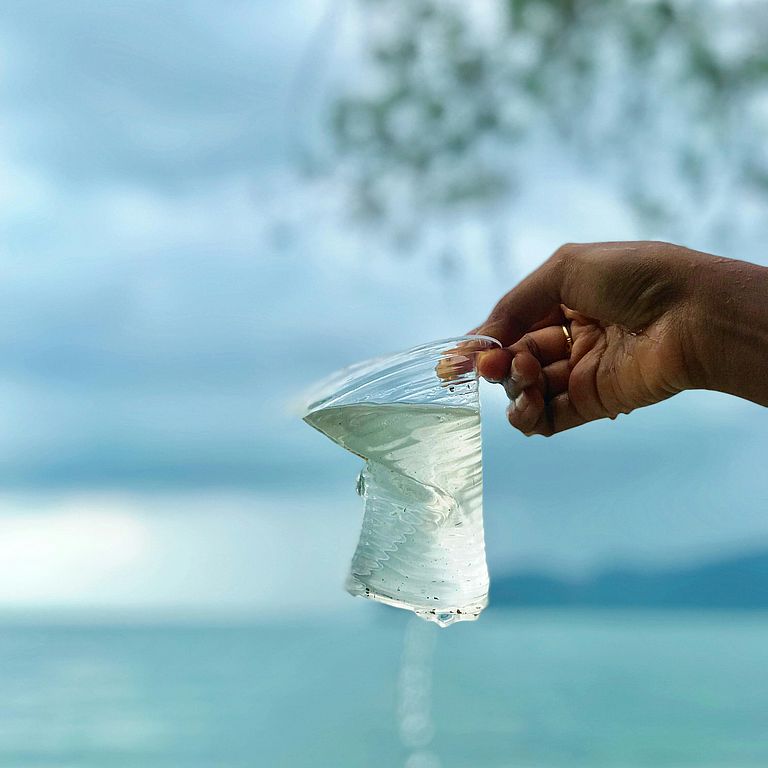Rivers are one of the main sources of trace and major elements to the ocean. The supply of elements to the ocean has far reaching effects on ocean biota and on the composition of seawater. For most elements, this supply is significantly modified by estuarine processes. Large variations in ionic strength, pH and the load of organic and inorganic suspended matter lower the stability of some elements and increase the stability of other. It is thus not possible to determine how rivers contribute to the biogeochemistry of the ocean simply from upstream measurements of water chemistry. We worked in a variety of river estuaries from different climate zones, topography and levels of anthropogenic activity (Amazon, Congo, Niger, Zambezi, Lena, Borneo rivers) to unravel how estuary processes modify trace and major element inputs to the ocean. Most of these estuarine studies were coordinated with GEOTRACES cruises that sample ocean chemistry from the river mouth to the open ocean to compute the global ocean picture. Anthropogenic activities such as damming and contaminant emissions are increasingly modifying river and estuarine processes, we unravelled how the combined effects of these processes, ocean acidification and global warming will change the oceans.
Vieira, L.H., Krisch, S., Hopwood, M.J., Beck, A.J., Scholten, J., Liebetrau, V. and Achterberg, E.P. (2020). Unprecedented Fe delivery from the Congo River margin to the South Atlantic Gyre. Nature Communications, 11, 556.
DOI: 10.1038/s41467-019-14255-2
Project overview of working group Achterberg
-
Trace elements
-
Biogeochemical sensors
-
Nutrient limitation
-
Ammunition
-
Elemental analysis
-
Bioinorganic chemistry
-
Plastic pollution in the sea
Trace elements
Current projects
Trace elements: completed projects
Back to project overview
Biogeochemical sensors
Current projects
Completed Projects
Back to project overview
Nutrient limitation
Current projects
Nutrient limitation: Other current projects
We use laboratory culture experiments to investigate the response of key phytoplankton to environmental perturbation under controlled conditions.
A key issue in phytoplankton culturing experiments is (i) replicating growth conditions that are realistic of the oceans and (ii) being able to collect enough phytoplankton material from the cultures at each sampling point for detailed chemical and biological analysis. To address this, we have adapted a novel approach utilizing exponentially batch fed cultures, to grow large amounts of phytoplankton under steady state nutrient limitation.
Current experiments are focused on investigating the role of iron and phosphorus on key species of nitrogen fixing bacteria (diazotrophs), with a particular emphasis on interactions between iron and phosphorus supply via the requirement for iron in alkaline phosphatase (the enzyme used by microbes to retrieve phosphorus from dissolved organic phosphorus), the implications of nutrient limitation on elemental stoichiometry, and changes in metabolites with shifts in nutrient limitation.Contact: Dr. Martha Gledhill & Dr. Thomas Browning
The activity of microbes is a critical component elemental cycling in the ocean. We are particularly interested in the elements that can limit the growth of phytoplankton: these organisms contribute to ~50% of primary production on Earth, are the base of the marine food web, mediate the exchange of carbon dioxide from the atmosphere into the ocean, and package and transfer elements from the surface into the deep ocean.
Key elements playing important roles in regulating phytoplankton growth alongside the types of phytoplankton present in seawater include nitrogen, phosphorus, silicon, and iron, with increasing recognition that this list should potentially be extended to include zinc, manganese, cobalt and vitamin B12.
We investigate the role these elements play by:- Conducting experiments where small amounts of these nutrients are added to seawater and detecting phytoplankton responses
- Assessing the distribution, supply and removal of ocean nutrients in relation to measured phytoplankton biomass and community structure
- Measuring the physiology of phytoplankton using fluorescence techniques and enzyme activity assays
- Measuring key microbial metabolites in seawater, which are diagnostic of phytoplankton nutrient stress
- Linking nutrient availability with phytoplankton growth using simple numerical models.
A Federal Ministry of Education and Research (BMBF) funded project to assess potential co-limitation of phytoplankton growth by nitrogen and iron in the Equatorial Pacific. This is a collaborative project with Dr. Mak Saito in Woods Hole Oceanographic Institute (USA) investigating microbial nutrient stress proteins and Prof. Alessandro Tagliabue at the University of Liverpool (UK) linking field results to simulations of nutrient limitation in global ocean biogeochemical models.
Contact: Dr. Thomas BrowningA German Research Foundation (DFG) funded project that will investigate the drivers of nutrient limitation regimes in the South East Atlantic. This project will target recently upwelled seawater near the African coast that then propagate offshore in filaments. We will investigate nutrient sources, sinks and cycling in filaments and the impacts and feedbacks of phytoplankton nutrient limitation.
Contact: Dr. Thomas Browning
Coastal upwelling associated with eastern boundary currents transports deep-water nutrients to the surface, leading to sites with the highest productivity in the global ocean.
This high productivity sustains major fisheries and curbs the outgassing of CO2 into the atmosphere. Large quantities of sinking organic matter also contribute to deeper water oxygen removal as this material becomes progressively respired by bacteria.
These sites are projected to be strongly impacted by future climate change. Warming and stratification are expected to reduce upwelling, potentially impacting both the productivity of these zones and deep-water oxygen concentrations. Amongst other factors, such feedbacks are critically dependant on any changes in concentrations of nutrients and trace elements that are upwelled. We are conducting research to evaluate the current controls on nutrient and trace element sources, sinks and cycling in these systems, and their impact on phytoplankton productivity, in order to be in a better position to predict the feedbacks of climate change.This project will investigate the drivers of nutrient limitation regimes in the South East Atlantic. We will target recently upwelled seawater at the African coast that then propagate offshore in high energy filaments. We will investigate nutrient sources, sinks and cycling in the filaments, the impacts and feedbacks of shifts in phytoplankton nutrient limitation, and carbon export.
The METEOR expedition M187 took place as a part of this project. Click here for the expedition blog.
Contact: Dr. Thomas Browning
Nutrient limitation: completed projects
In a project led by Dr. Ewan Wakefield at the University of Glasgow (UK) investigating the drivers of seabird distributions in the temperate North Atlantic, we investigated the distribution of nutrients and phytoplankton in this region and assessed nutrient limitations on phytoplankton growth.
Contact: Dr. Thomas Browning
Click here for the podcast episode about the project with Dr. Thomas Browning and Ali Al-Hashem.
Browning, T.J., Al-Hashem, A.A., Hopwood, M.J., Engel, A., Wakefield, E.D. und Achterberg, E.P. (2019). Nährstoffregulierung der Phytoplanktonblüte im späten Frühjahr im Nordatlantik in mittleren Breiten. Limnology and Oceanography, 65, 1136-1148.
DOI: 10.1002/lno.11376In 2019 the first GEOTRACES-China section cruise was successfully conduced in the Western Subtropical Pacific. This project was led by Xiamen University and we participated in the cruise to contribute to investigating the controls on phytoplankton growth in this region. Also see cruise information and cruise reporting.
You can find more information about the research trip here and the cruise report here.
Nitrogen is often the nutrient limiting microbial activity in the ocean, but is present in a number of different chemical forms that can be accessed to different extents by different microbes. Jing Liu is a PhD student funded by the Chinese CSC programme who joined our group after completing her first two years at Xiamen University with Prof. Minhan Dai. Jing investigated rates of nitrogen uptake and transformations in (i) a coastal site in the Baltic Sea (Boknis Eck) and (ii) in an open ocean system in the Pacific as part of our scheduled GEOTRACES cruise programme.
As part of the South East Atlantic GEOTRACES cruise in 2014/5, we investigated the impact of changing nutrient regimes on phytoplankton nutrient limitation status and its impact on phytoplankton community composition. We found clear gradients in phytoplankton limitation by nitrogen and iron, but most surprisingly also found swathes of ocean that were co-limited by both nutrients; that is, both nitrogen and iron needed to be supplied to result in enhanced phytoplankton growth. Nutrient limitations regimes were predictable on the basis of measured nutrient concentrations in seawater. We also found that co-limited sites had more diverse phytoplankton communities and hypothesized that this diversity could be a key driver of nutrient co-limitation and restrict co-limitation developing in state-of-the-art models used for projecting the impacts of climate change. We also found an unexpected important secondary role for cobalt or cobalt-containing vitamin B12 in regulating phytoplankton growth after supply of nitrogen and iron.
Browning, T.J., Achterberg, E.P., Rapp, I., Engel, A., Bertrand, E.M., Tagliabue, A. and Moore, C.M. (2017). Nutrient co-limitation at the boundary of an oceanic gyre. Nature, 551, 242-246.
DOI: 10.1038/nature24063This work was funded by a Marie Skłodowska Curie fellowship to Dr. Thomas Browning from the European Commission as part of Horizon2020.
In some regions of the low latitude oceans, concentrations of phosphorus are extremely depleted, to the extent that they could limit phytoplankton growth and rates of nitrogen fixation. In order to get enough phosphorus, microbes access the phosphorus pool that is bound to dissolved organic matter. To do this they require an enzyme called alkaline phosphatase. There are three main types of this enzyme, PhoA, PhoX, and PhoD. It was known for decades that PhoA contains zinc as its activating metal co-factor. However, recent crystallography studies have shown that PhoX and PhoD actually contain iron, an element often at low availability in the ocean. We investigated the potential for iron and/or zinc limitation of alkaline phosphatase activity in the Subtropical North Atlantic, where concentrations of phosphorus are extremely depleted. We found that supplying iron led to significant enhancements in alkaline phosphatase where iron supply from dust was lowest, and no enhancements where iron supply was already high. Zinc supply consistently led to no changes in alkaline phosphatase activity suggesting it was not limiting.
Dr. Xuechao Wang was a PhD student in the group funded by a CSC Scholarship investigating this further, using culturing work with the nitrogen-fixing microbe Trichodesmium.Browning, T.J., Achterberg, E.P., Yong, J.C., Rapp, I., Utermann, C., Engel, A. and Moore, C.M. (2017). Iron limitation of microbial phosphorus acquisition in the tropical North Atlantic. Nature communications, 8, 15465.
DOI: 10.1038/ncomms15465This work was funded by a Marie Skłodowska Curie fellowship to Dr. Thomas Browning from the European Commission as part of Horizon2020.
As part of the SFB 754 programme, experiments were conducted in the Peruvian Upwelling zone to investigate the nutrients limiting to phytoplankton growth. We found that directly over the shallow Peruvian Shelf phytoplankton were not limited by any nutrients, but rapidly became limited by iron a short distance offshore. No clear limiting role for either cobalt or vitamin B12 was found for this region.
Browning, T.J., Rapp, I., Schlosser, C., Gledhill, M., Achterberg, E.P., Bracher, A. and Le Moigne, F.A. (2018). Influence of Iron, Cobalt, and Vitamin B12 Supply on Phytoplankton Growth in the Tropical East Pacific During the 2015 El Niño. Geophysical Research Letters, 45, 6150-6159.
DOI: 10.1029/2018GL077972This work was funded by a Marie Skłodowska Curie fellowship to Dr. Thomas Browning from the European Commission as part of Horizon2020.
This project investigated the impact of eastern boundary upwelling and deep-water oxygen depletion on ocean productivity and carbon export. Our study site was the South East Atlantic Ocean, where upwelling associated with the Benguela current leads to high phytoplankton productivity and establishes a major oxygen minimum zone. Moving further offshore, upwelling, productivity, and oxygen depletion reduce drastically. By investigating sites along this transition we deciphered important controls on: (i) the amount of phytoplankton productivity in the surface ocean, and (ii) the sinking of this material into the deep ocean. We collaborated with modellers to use our results to improve projections of ocean carbon uptake under future climate scenarios, and social scientists to assess socio-economic costs and inform stakeholders.
Contact: Prof. Eric Achterberg
We investigated the controls of iron and other trace elements in two eastern boundary upwelling regions: off the coasts of Mauritania and Peru. Both regions are sites of major fisheries, ocean-atmosphere carbon exchange, and are projected to experience important changes in the future.
Rapp, I., Schlosser, C., Menzel Barraqueta, J.L., Wenzel, B., Lüdke, J., Scholten, J., Gasser, B., Reichert, P., Gledhill, M., Dengler, M. and Achterberg, E.P. (2019). Controls on redox-sensitive trace metals in the Mauritanian oxygen minimum zone. Biogeosciences (BG), 16, 4157-4182.
DOI: 10.5194/bg-16-4157-2019
Rapp, I., Schlosser, C., Browning, T.J., Wolf, F., Le Moigne, F.A., Gledhill, M. and Achterberg, E.P. (2020). El Niño-Driven Oxygenation Impacts Peruvian Shelf Iron Supply to the South Pacific Ocean. Geophysical Research Letters, 47, p.e2019GL086631.
DOI: 10.1029/2019GL086631
Browning, T.J., Rapp, I., Schlosser, C., Gledhill, M., Achterberg, E.P., Bracher, A. and Le Moigne, F.A. (2018). Influence of Iron, Cobalt, and Vitamin B12 Supply on Phytoplankton Growth in the Tropical East Pacific During the 2015 El Niño. Geophysical Research Letters, 45, 6150-6159.
DOI: 10.1029/2018GL077972Contact: Prof. Eric Achterberg, Dr. Martha Gledhill
Back to project overview
Ammunition
Current projects
Ammunition: Other current projects
A large fraction of bombs in World War II (WWII) were not exploded, and thus have Mercury (Hg) fulminate containing shells embedded in sediments. Before and during WWII vast amounts of aircraft munition were fired near the Baltic city of Kiel (Germany). Many of these munitions are located adjacent to shore, and near population centers and fishing grounds which are sensitive to Hg toxicity. After 70 years on the seafloor, the shells are degrading and releasing their explosive compounds, including Hg fulminate. It has been demonstrated that significant levels of munition compounds such as nitroaromatics have been detected in waters surrounding bombs. Therefore, it is important to explore if the Hg in the munitions is also pronounced in these areas, and if it is a threat to coastal citizens and aquatic biota. In order to complete this mission, the fish, plankton, waters and sediments are being collected at sites proximate to known munitions. The proximate locations of these bombs are verified through geophysical mapping and measurements. Samples are being analyzed for Hg and Methylmercury (MeHg) in the biogeochemistry lab at GEOMAR in order to measure if there is a potential for Hg leakage or transformation into the environment from the old bombs. This research will help to assess threat levels of localized toxic Hg from munitions to the citizens and environment. It is possible that these results will help us to understand the local impacts of degradation on local waters, and where munition cleanup and removal might be prioritized.
Contact: Kathleen Gosnell
Back to project overview
Elemental analysis
Elemental analysis: current projects
The study of aquatic chemistry encompasses the fundamental and important control that chemistry plays in the composition of natural waters. The solution pH, ionic strength (a variable that accounts for the charge and concentration of ions in solution), temperature and medium composition, together with chemical speciation, are critical for understanding and predicting the binding, solubility, transport, toxicity and bioavailability of (micro-)nutrients, and the physicochemical characteristics of particles and natural organic matter in seawater. A chemical element may exist in a variety of molecular and ionic forms, which is known as chemical speciation. Our studies of aquatic chemistry investigate the chemical reactions and processes affecting the behaviour and fate of chemical species in the marine environment.
We determine chemical speciation through analytical methods that measure specific metal species and total metal concentration, in combination with thermodynamically based ion interaction models (e.g. Pitzer model). Activity coefficients in electrolyte solutions (a function of temperature, pressure and solution composition) can be used to calculate the speciation of micronutrients in seawater and other natural waters. Speciation models are needed to predict changes in the chemical reactions occurring in the global ocean due to climate change, which will impact pH, temperature and ionic strength.
To understand the speciation of micronutrients, it is necessary to model their interactions, which are given by the activity coefficients, with the major components of seawater ((Cl-, OH-, CO32-, etc.) and the organic ligands (e.g., dissolve organic matter). We collaborate with the SCOR Working Group 145 on Modelling Chemical Speciation in Seawater to Meet 21st Century Needs (MARCHEMSPEC) to characterize the micronutrient chemical speciation and binding in seawater and other natural waters.
Sea-salt is primarily composed of eleven ions at nearly constant ratios. These ions, commonly referred to as ‘major elements’ are found in seawater at concentrations >1 mg/kg, and together they make up >99% of the soluble ionic constituents of seawater. The major elements are key components in all biological and chemical reactions and processes taking place in the oceans. Small variations in the concentrations of major elements hold valuable information, and are particularly useful in large scale monitoring of marine ecosystems. We take advantage of the tendencies of different groups of organisms to incorporate characteristic proportions of various elements into their skeletons. In doing so, these organisms modify the chemistry of the surrounding seawater. Variability in seawater chemistry induced by skeleton precipitation can be used to quantify, for example, the amount of calcium carbonate precipitated by coral reefs relative to pelagic calcifiers, or the abundance of Acantharia (a group of Rhizaria precipitating SrSO4 skeletons) in the ocean. Data regarding non-conservative variability in major element concentrations of the ocean also provide a useful addition to trace element information obtained as part of the GEOTRACES programme. Major and trace elements reach the ocean from similar sources (rivers, sediments, dust, hydrothermal activity) but are often removed by different mechanisms. We take advantage of the GEOTRACES platform to quantify major and trace element concentrations in the same samples and use their diverse geochemistry to unravel reaction pathways in the ocean.
Steiner, Z., Sarkar, A., Prakash, S., Vinayachandran, P.N. and Turchyn, A.V. (2020). Dissolved Strontium, Sr/Ca Ratios, and the Abundance of Acantharia in the Indian and Southern Oceans. ACS Earth and Space Chemistry, 4, 802−811.
DOI: 10.1021/acsearthspacechem.9b00281
Steiner, Z., Turchyn, A.V., Harpaz, E. and Silverman, J. (2018). Water chemistry reveals a significant decline in coral calcification rates in the southern Red Sea, Nature Communications, 9, 3615.
DOI: 10.1038/s41467-018-06030-6
Steiner, Z., Erez, J., Shemesh, A., Yam, R., Katz, A. and Lazar, B. (2014). Basin-scale estimates of pelagic and coral reef calcification in the Red Sea and Western Indian Ocean. Proceedings of the National Academy of Sciences of the United States of America, 111, 46, 16303-16308.
DOI: 10.1073/pnas.1414323111
Elemental analysis: completed projects
The substance Tris (2-amino-2-hydroxymethyl-1,3-propanediol) together with its conjugate acid TrisH+, are used in artificial seawater to calibrate instruments for measuring pH of saline waters.
Measurements of pH in seawater relies on the accuracy of pH values assigned for the Tris-seawater buffers currently used for calibration, and are limited to natural waters of seawater stoichiometry.
Chemical speciation models, such as those based upon the Pitzer equations, can potentially calculate buffer pH. Nevertheless, the speciation models are not yet fully characterised for all the interactions of Tris and TrisH+ that influence the pH of the buffer, especially at temperatures other than 25 °C. We quantified the interactions of Tris with some of the major components of seawater, by measuring the solubility of neutral Tris in salt solutions, and of the same salts in aqueous solutions of Tris. Our experiments covered a wide range of concentrations, and temperatures between 5 °C and 45 °C.
We used the obtained results together with literature data, to obtain Pitzer model parameters for the self-interaction of Tris, and of Tris with the ions Na+, TrisH+, and SO42- as functions of temperature. We have also determined the value of the thermodynamic solubility product of Tris in water as a function of temperature. The final goal was to obtain a traceable chemical speciation model for Tris buffer in artificial seawater, as a function of temperature, salinity, and medium composition.In addition to the support of Scientific Committee on Oceanic Research, this work was part of a project funded by a joint Natural Environment Research Council and U.S. National Science Foundation grant with Prof. Simon Clegg, Dr. Andrew Dickson, and Dr. Heather Benway.
Also there is a demonstration model, where you can simulate the reults.
Lodeiro, P., Turner, D. R., Achterberg, E.P., Gregson, F.K.A., Reid, J.P. and Clegg, S.L. (2021). Solid–Liquid Equilibria in Aqueous Solutions of Tris, Tris-NaCl, Tris-TrisHCl, and Tris-(TrisH)2SO4 at Temperatures from 5 to 45 °C. J. Chem. Eng. Data, 66, 437-455.
DOI: 10.1021/acs.jced.0c00744D. R. Turner, E. P. Achterberg, C.T. A. Chen, S. L. Clegg, V. Hatje, M. Maldonado, S. G. Sander, C. M. van den Berg, and M. Wells (2016). Toward a Quality-Controlled and Accessible Pitzer Model for Seawater and Related Systems. Frontiers in Marine Science, 3, 139.
DOI: 10.3389/fmars.2016.00139Contact: Dr. Pablo Lodeiro
Marine dissolved organic matter (DOM) is a complex, heterogeneous mixture of 1000’s of compounds. We investigated the acid-base properties of this complex material in order to describe the overall acidity and heterogeneity of the functional groups in DOM. These thermodynamic properties of marine DOM determine interactions between DOM and trace metals, and can also influence total alkalinity in coastal waters where DOM concentrations are high. We preconcentrated large quantities of DOM and undertook carefully controlled acid-base titrations on the preconcentrated DOM. We used a combination of the non-ideal competitive adsorption (NICA) isotherm that accounts for the specific -chemical- ion binding, and Donnan model for electrostatic effects, in collaboration with Prof. Jaume Puy, Prof. Carlos Rey-Castro and Dr. David Calin (University of Lleida, Spain). Application of the NICA-Donnan model resulted in intrinsic equilibrium protonation constants for marine DOM that were used to develop a mechanistic understanding of how pH and the acid-base properties of marine DOM influence metal speciation and biogeochemistry in seawater. We used the Amazon estuary as a highly dynamic case study and Adrienne Hollister based in the group of Prof. Andrea Koschinsky (Constructor University, Bremen) used multiple approaches to investigate trace element biogeochemistry as part of a GEOTRACES process study into the Amazon estuarine plume.
Lodeiro, P., Rey-Castro, C., David, C., Achterberg, E. P., Puy, J., and Gledhill, M. (2020). Acid-base properties of dissolved organic matter extracted from the marine environment. Sci. Total Environ. 729, 138437.
DOI: 10.1016/j.scitotenv.2020.138437Contact: Dr. Martha Gledhill, Dr. Pablo Lodeiro
This project was funded by the German Research Foundation.Iron limits productivity in 30% of the surface ocean and its biogeochemistry is strongly influenced by its interactions with organic matter. In this project we used intrinsic iron-binding properties of marine dissolved organic matter (DOM) to investigate the influence of pH and DOM on the biogeochemistry of iron. We derived intrinsic constants for describing the affinity of the trace nutrient iron to organic matter using the NICA-Donnan approach. Dr. Kechen Zhu applied novel experimental designs in order to determine iron speciation as a function of pH in seawater. We collaborated with Dr. Jan E. Groenenberg (Universität Wageningen, The Netherlands) to use the ion pair speciation program ORCHESTRA in combination with parameter estimation software PEST to derive the intrinsic iron-binding properties of marine DOM. Since ion-pairing models are not ideal for seawater, we also worked with Prof. em. David R. Turner on development of ion interaction (Pitzer) models that incorporate metal organic interactions as part of the SCOR working Group 145 on Modelling Chemical Speciation in Seawater to Meet 21st Century Needs (MARCHEMSPEC). These properties can then be applied in biogeochemical models to predict how iron speciation will influence the ocean dissolved iron inventory in the future as the ocean becomes more acidic in response to increased CO2 in the atmosphere.
Avendaño, L., Gledhill, M., Achterberg, E. P., Rérolle, V. M. C., and Schlosser, C. (2016). Influence of Ocean Acidification on the Organic Complexation of Iron and Copper in Northwest European Shelf Seas; a Combined Observational and Model Study. Front. Mar. Sci. 3, 58.
DOI: 10.3389/fmars.2016.00058
Ye, Y., Völker, C., and Gledhill, M. (2020). Exploring the Iron-Binding Potential of the Ocean Using a Combined pH and DOC Parameterization. Global Biogeochem. Cycles 34, GBC20978. DOI: 10.1029/2019GB006425
Contact: Dr. Martha Gledhill
This project was funded by the China Scholarship Council, the Natural Environment Research Council and the Collaborative Research Center 754 of the German Research Foundation.More than a half of atmospheric CO2 on earth is taken up by phytoplankton, but iron (Fe) limits their growth in large regions of the oceans. Key existing knowledge gaps are the pathways by which phytoplankton take up Fe, and influences of chemical conditions in the microenvironment surrounding algal cells (i.e., phycosphere) on Fe speciation and bioavailability. This knowledge represents an impediment to understanding the complex effects of climate change on Fe uptake and oceanic carbon fixation. In this project, collaborating with Dr. Martha Gledhill and Prof. Eric Achterberg at GEOMAR as well as Prof. Yuri Korchev at Imperial College London, Dr. Fengjie Liu determined chemical conditions and Fe speciation in the phycosphere of model phytoplankton species, quantify the role of phycosphere Fe speciation in Fe bioavailability, and investigate influences of climate change (i.e., warming and increased CO2) on Fe-algae interfacial processes. The data of the project will help us better assess the Fe bioavailability to phytoplankton in current and future oceans, which makes a key contribution to global carbon sequestration.
Liu, F., Tan, Q.-G., Weiss, D., Crémazy, A., Fortin, C. and Campbell, P.G.C. (2020). Unravelling Metal Speciation in the Microenvironment Surrounding Phytoplankton Cells to Improve Predictions of Metal Bioavailability. Environmental Science & Technology, 54, 13, 8177-8185.
DOI: 10.1021/acs.est.9b07773
Liu, F., Tan, Q.-G., Fortin, C. and Campbell, P.G.C. (2019). Why Does Cysteine Enhance Metal Uptake by Phytoplankton in Seawater but Not in Freshwater? Environmental Science & Technology, 53, 11, 6511-6519.
DOI: 10.1021/acs.est.9b00571
Liu., F, Fortin, C. and Campbell, P.G.C. (2018). Chemical Conditions in the Boundary Layer Surrounding Phytoplankton Cells Modify Cadmium Bioavailability. Environmental Science & Technology, 52, 14, 7988-7995.
DOI: 10.1021/acs.est.8b01408
This project was funded through Marie Skłodowska Curie measures by the European Commission finanziert.Amongst the 1000’s of organic molecules present in the marine environment, a proportion are known to be metabolites produced by marine organisms, such as amino acids, nucleotides, purines and carbohydrates. A select few of these metabolites contain metals. Examples include hemes, siderophores, cobalamins (vitamin B12 complexes) and methanobactins. Some of these metabolites are cofactors of proteins (e.g. heme, cobalamins), whilst others are highly specific complexes produced by microbes in order to acquire essential metals from the environment (siderophores, methanobactin). We investigated the occurrence of these metabolites in both particulate and dissolved fractions in seawater, freshwater, or in organisms in culture in order to understand how oceanic trace element distributions might influence microbial metal metabolism. We used a combination of organic and elemental mass spectrometry techniques to investigate the marine metallome. The project was carried out with the collaboration of Prof. Yeala Shaked (The Inter-University Institute for Marine Sciences in Eilat, Israel) and Dr. Insa Rapp (Dalhousie University in Halifax, Canada).
Gledhill, M., Basu, S., and Shaked, Y. (2019). Metallophores associated with Trichodesmium erythraeum colonies from the Gulf of Aqaba. Metallomics, 11, 1547–1557.
DOI: 10.1039/C9MT00121B
Basu, S., Gledhill, M., de Beer, D., Prabhu Matondkar, S. G., and Shaked, Y. (2019). Colonies of marine cyanobacteria Trichodesmium interact with associated bacteria to acquire iron from dust. Commun. Biol. 2, 284.
DOI: 10.1038/s42003-019-0534-z
Louropoulou, E., Gledhill, M., Browning, T. J., Desai, D. K., Barraqueta, J.-L. M., Tonnard, M., et al. (2019). Regulation of the Phytoplankton Heme b Iron Pool During the North Atlantic Spring Bloom. Front. Microbiol. 10, 1566.
DOI: 10.3389/fmicb.2019.01566
Louropoulou, E., Gledhill, M., Achterberg, E. P., Browning, T. J., Honey, D. J., Schmitz, R. A., et al. (2020). Heme b distributions through the Atlantic Ocean: evidence for “anemic” phytoplankton populations. Sci. Rep. 10, 4551.
DOI: 10.1038/s41598-020-61425-0Contact: Dr. Martha Gledhill
This project was funded by German Research Foundation, German-Israeli Foundation for Scientific Research and Development and Ocean Frontier Institute.
Back to project overview
Bioinorganic chemistry
Current projects
Bioinorganic chemistry: completed projects
In this project we collaborated with Dr. Robert Fischer and Dr. Robert Ptacnik from Wassercluster (Lunz, Austria) to apply the Exponentially Fed Batch (EFB) culture technique to obtain steady state trace metal limitation in marine phytoplankton. We used the unicellular cyanophyte Crocosphaera subtropica in the experiments and investigated changes in elemental stoichiometry under iron limitation.
Here you can find more information about the aquascale lab.
This project was funded by Collaborative Research Center 754.
Heme b is an iron containing cofactor of hemoproteins. Heme b makes up approximately 20% of the intracellular iron pool in marine phytoplankton and hemoproteins carry out photosynthesis, respiration and the control of oxidative stress. In these experiments, Dr. Evangelia Louropoulou worked with Prof. Dr. Ruth Schmitz-Streit (Christian-Albrechts-Universität zu Kiel) and Prof. Julie LaRoche (Dalhousie University, Canada) to investigate the regulation of the heme b pool in Crocosphaera subtropica.
Contact: Dr. Martha Gledhill
The project was funded by the Helmholtz Research School for Ocean System Science and Technology.


